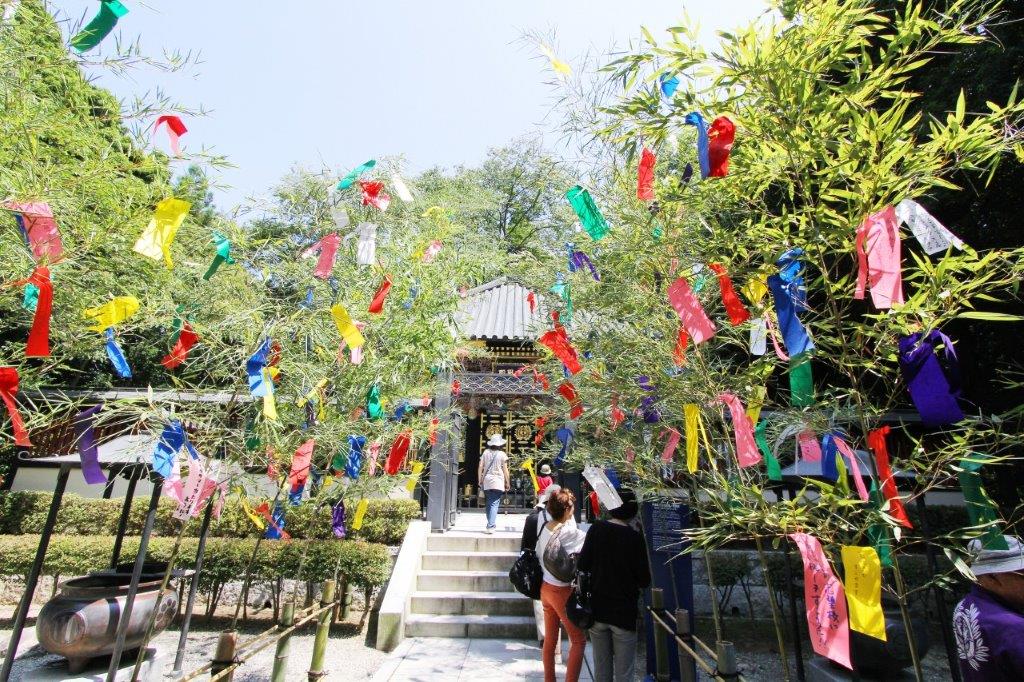When do you celebrate Obon?
 Gail Umehara / Wordsmith
Gail Umehara / Wordsmith
During her 16 years in Japan, Gail juggled raising a family with, amongst other things, working as a translation assistant, librarian, and editor. Back in Australia, she continues to work with words as an interpreter, editor and TAFE lecturer.
When do you celebrate Obon
 While shivering miserably here in Adelaide this winter, it was nice to try and summon up warm feelings by thinking of friends and family in Japan enjoying summer. Of course, summer in Japan can be very hot and humid, but huddled by the heater what you remember is the fun and festivity the rustle of tanzaku strips among bamboo branches decorated for the Tanabata Festival, dressing up in yukata to watch fireworks or join in bon odori, and trips to visit relatives for obon.
While shivering miserably here in Adelaide this winter, it was nice to try and summon up warm feelings by thinking of friends and family in Japan enjoying summer. Of course, summer in Japan can be very hot and humid, but huddled by the heater what you remember is the fun and festivity the rustle of tanzaku strips among bamboo branches decorated for the Tanabata Festival, dressing up in yukata to watch fireworks or join in bon odori, and trips to visit relatives for obon.
The Tanabata Festival was always a family favourite, especially because we got to celebrate it twice: once at home in Tokyo in July, and then again in August when visiting the grandparents during the school holidays. Why are festivals celebrated at different times of the year in different parts of the country
Did you know that there are over forty different calendar systems in use in the world today Most of these are closely related to religious or social traditions, and nearly all are now used together with the most commonly used system, known as the Gregorian calendar. The purpose of a calendar is to keep track of time, and the calculations are usually done in conjunction with the seasons (solar calendars) or the phases of the moon (lunar calendars), or a combination of both. The major difficulty with such calculations is that a year does not divide neatly into even amounts of time to match the days or the seasons. That is why all calendars have to make adjustments every so often. The Bahá'í calendar, for instance, has 19 months of 19 days each plus four extra days (five in leap years). The Chinese calendar, one of the world's oldest, uses a lunisolar system that has to add a whole month from time to time to keep the calendar in synch with the seasons.
In 1582 Pope Gregory introduced an improvement on the Roman, or Julian (named after Julius Caesar), calendar. Interestingly, although the new calendar was used first in the Roman Catholic world and eventually (quite slowly, actually the most recent country to make it their official calendar was Turkey, in 1927) throughout most of the rest of the world, one of Christianity's most significant events, Easter, is not fixed on the calendar but is still calculated on the basis of a complicated formula involving the full moon and the vernal (spring) equinox.
The traditional Japanese calendar was based on a lunisolar system, and the festivals that are such an important part of Japanese life were scheduled according to this calendar. When the Meiji government decided to change to the modern Gregorian calendar in 1873, it was decreed that the day following December 2 of Meiji 5 (1872) would be January 1 of Meiji 6 (1873).

That was fine for administrative matters, but confronted festival organisers with the dilemma of working out when their festivals should be held. Ultimately, three patterns appeared. Tokyo and surrounding areas in eastern Japan showed their solidarity with the modernisation happening around them and applied "the middle of the 7th month" timing literally using the new calendar, making obon and the Tanabata Festival in the middle of July; further away from the capital, it was decided to keep the festival at its original seasonal time, giving it a new date in the middle of August; while even further afield (such as the southwestern parts of Honshu, Kyushu, Shikoku, and Okinawa) the old lunar calculation was maintained, so that Obon falls on different dates in August each year!

